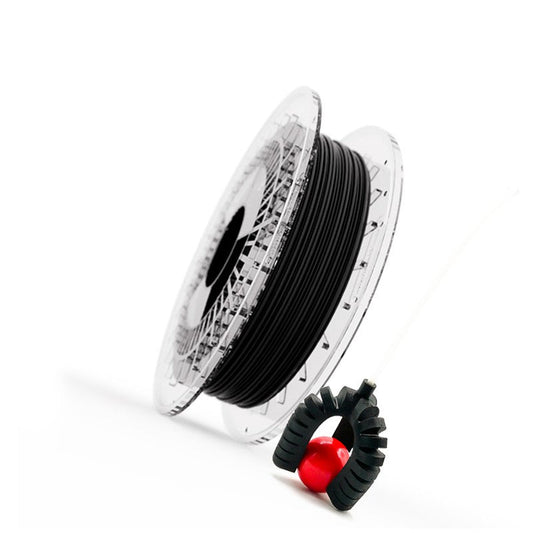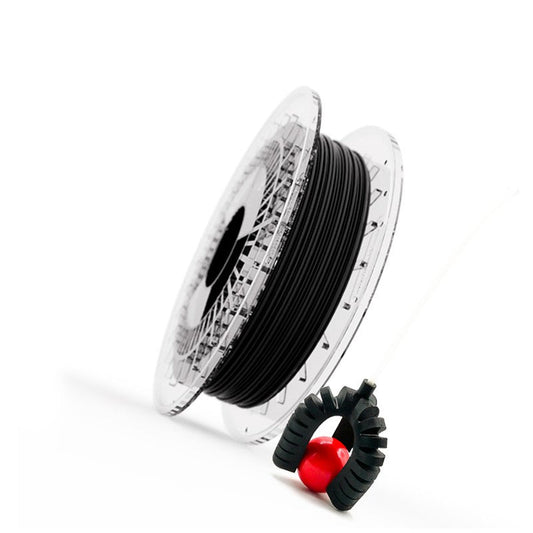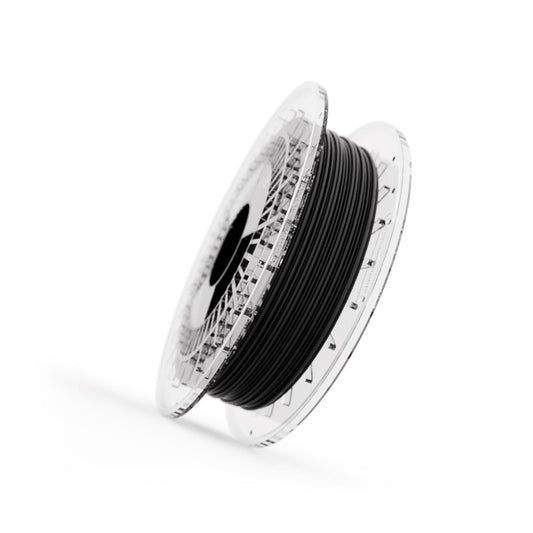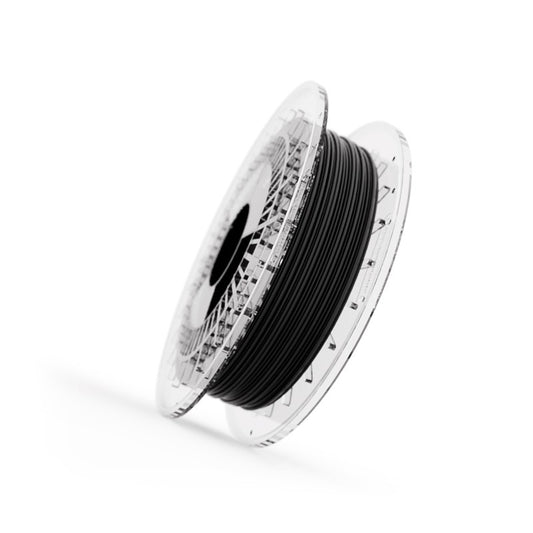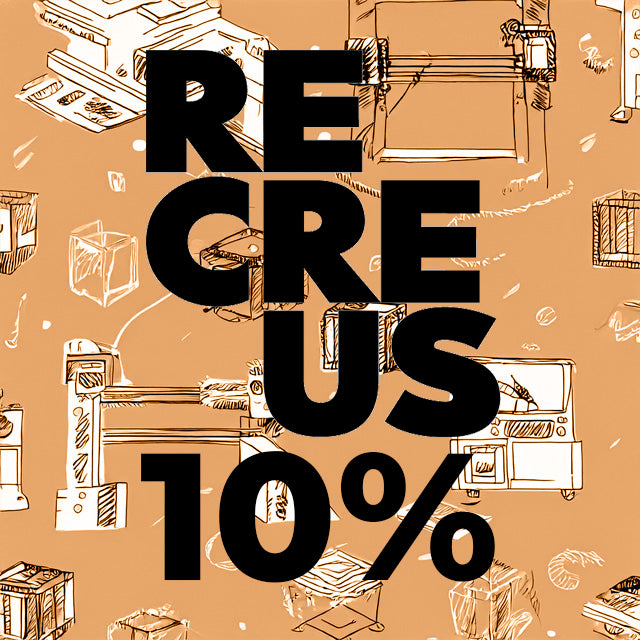PETG vs PETG - CF
PETG vs PETG-CF: Choisir le bon matériau pour votre projet
Une comparaison complète entre le PET-G standard et le PET-G renforcé de fibre de carbone pour des applications avancées d'impression 3D
Le filament PET-G est l'un des matériaux les plus polyvalents et populaires dans l'impression 3D. Sa résistance, durabilité, et facilité d'impression en font un excellent choix pour une grande variété de projets. Découvrez comment notre variante renforcée en fibre de carbone porte ces propriétés au niveau supérieur.
Dans ce guide, nous explorerons en détail les deux matériaux, en comparant leurs caractéristiques uniques et en vous aidant à déterminer quelle option correspond le mieux à vos besoins spécifiques. Plongeons dans le monde des matériaux d'impression 3D haute performance !

Les filaments PET-G et PET-G-CF (avec fibre de carbone) sont deux matériaux très populaires dans le monde de l'impression 3D. Chacun possède des caractéristiques uniques qui les rendent idéaux pour différents types de projets.
Dans cet article, nous allons analyser les différences entre ces deux matériaux techniques pour vous aider à choisir le plus adapté à votre prochain projet d'impression 3D.
PETG, ou polyéthylène téréphtalate modifié par du glycol, est un matériau thermoplastique qui offre une excellente résistance à la traction, élasticité et résistance à la chaleur. C'est un matériau facile à imprimer, ce qui en fait un choix populaire pour des impressions 3D de haute qualité.
PETG-CF, d'autre part, est une variante du PET-G qui contient de la fibre de carbone dans sa composition. Cette fibre de carbone confère au matériel une plus grande rigidité, résistance et durabilité par rapport au PET-G standard.
Pour vous aider à mieux comprendre les différences entre ces deux matériaux, nous avons préparé un tableau comparatif détaillant certains points clés qui différencient les deux matériaux. Voyons leurs différences en fonction de leursRigiditéetRésistance.


Comparaison du filament PETG et du PETG avec fibre de carbone (PETG CF)

Les différences mécaniques et d'utilisation entre le PET-G et le PET-G renforcé de fibres de carbone (PET-G CF) sont significatives et varient selon les besoins spécifiques de l'application.
Le PETG est connu pour sa polyvalence en impression 3D, offrant résistance et facilité d'impression.
En revanche, le PET-G CF combine les avantages du PET-G avec la haute résistance mécanique fournie par la fibre de carbone.
Cependant, comme on peut le voir dans le graphique ci-dessus, il existe plusieurs paramètres qui montrent des différences claires entre les deux matériaux.
- RigiditéEn se concentrant sur la rigidité, le PET-G CF est plus rigide que le PET-G pur, lui conférant de meilleures propriétés mécaniques telles qu'une plus grande résistance à la traction et à la compression.Module de tractionest trois fois supérieur au PETG standard et sonRésistance à la tractionest double. Cette rigidité supplémentaire le rend idéal pour les pièces nécessitant une plus grande stabilité structurelle.
- RÉSISTANCE AUX CHOCSCependant, malgré l'augmentation de la rigidité, le PETG CF présente une résistance aux impacts inférieure par rapport au PETG standard. Cela est dû à la nature de la fibre de carbone, qui, tout en augmentant la rigidité, peut rendre le matériel plus sujet à la fracturation sous des charges d'impact.
Pour plus d'informations, vous pouvez vous référer aux fiches techniques (TDS) de chaque matériau :
Quand utiliser du filament PETG ou du PETG CF ?

Si nous nous demandons dans quels cas il est plus pratique d'utiliser du filament PET-G standard ou du PET-G avec fibre de carbone, nous allons maintenant détailler, en nous basant sur ce que nous avons vu dans la section précédente et sur ses propriétés mécaniques, quel matériel serait le plus adapté pour chaque application.

Utilisations et applications du PET-G standard
L'utilisation du PET-G est plus pratique dans les cas oùUne plus grande transparence, flexibilité et résistance aux chocs sont nécessaires.
Certains exemples de pièces pour lesquelles le PETG sans CF peut être préférable sont :
- Emballage et bouteilles :Le PET-G sans CF est largement utilisé dans la fabrication d'emballages et de bouteilles en raison de sa transparence, de sa résistance chimique et de sa capacité à résister aux impacts et aux chutes.
- Pièces ménagères et décoratives :Le PET-G sans CF est adapté à la fabrication de pièces ménagères, telles que des couvertures pour appareils, des cadres photo et des supports d'objets, en raison de sa durabilité et de sa résistance à la casse.
- Composants électroniques :Le PET-G sans CF peut être utilisé dans la fabrication de boîtiers et de couvertures pour composants électroniques en raison de sa résistance aux impacts, de sa résistance chimique et de sa capacité à supporter des températures élevées.

Utilisations et applications du PETG CF
L'utilisation de PETG avec CF est plus pratique dans les cas oùUne plus grande résistance mécanique et rigidité sont nécessaires.que le PET-G régulier. Le carbone ajouté au PET-G améliore ses propriétés de résistance et de rigidité, le rendant adapté pour des applications nécessitant des pièces durables et résistantes, étant idéal pour :
- Pièces structurales :Là où les exigences de résistance mécanique ne sont pas couvertes par le PET-G standard. En raison de sa rigidité et de sa résistance accrues, le PET-G avec CF est idéal pour la fabrication de pièces structurelles dans des applications telles que l'automobile, l'aérospatiale, les drones, la robotique, entre autres.
- Prototypage fonctionnel :Le PET-G avec CF est une bonne option pour l'impression de prototypes fonctionnels qui doivent résister à des charges ou des forces, car il offre une plus grande résistance et rigidité que le PET-G régulier.
- Outils, accessoires et composants de machines :Le PET-G CF peut être utilisé pour fabriquer des outils et accessoires qui doivent résister à des conditions de travail exigeantes, telles que des outils de serrage, des outils d'assemblage, des supports d'équipement, etc. Il peut également être utilisé dans la fabrication de composants de machines, tels que des engrenages, des poulies ou des roulements, entre autres, en raison de sa résistance et durabilité accrues.





